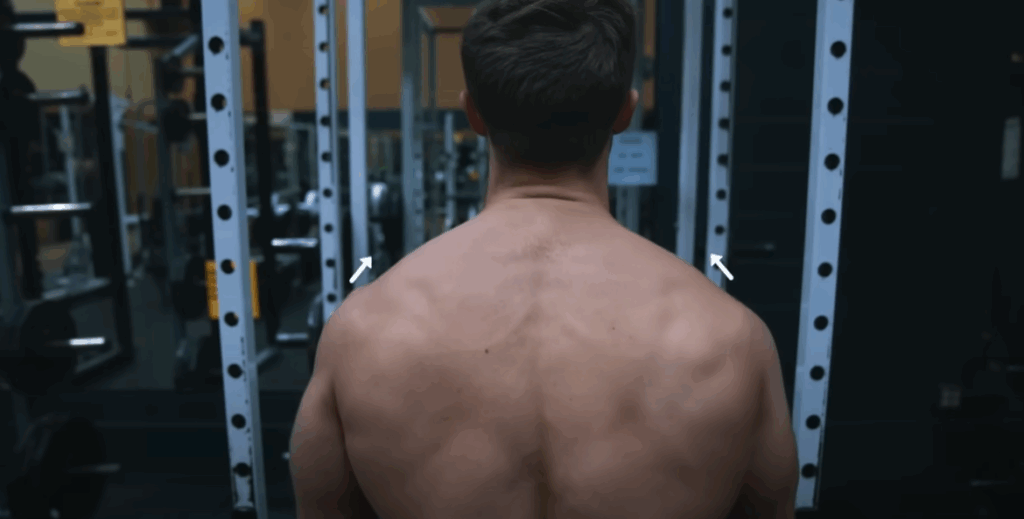If you want thick, powerful traps that stand out even when you’re wearing a hoodie, the shrug is one of the best exercises you can include in your training. But here’s the problem: most lifters perform shrugs incorrectly, turning them into nothing more than a heavy weight-holding contest rather than a targeted trap-builder.
This guide breaks down trap anatomy, biomechanics, proper technique, and the best shrug variations to maximize muscle growth while avoiding common mistakes.

Understanding Trap Anatomy and Function
Before diving into technique, it’s crucial to understand what the traps actually do. The trapezius muscle is a large, diamond-shaped muscle that spans the upper back and neck, with three distinct regions—upper, middle, and lower fibers.
- Upper Traps – Responsible for scapular elevation (lifting your shoulders up).
- Middle Traps – Assist in scapular retraction (pulling shoulder blades together).
- Lower Traps – Help with scapular depression and upward rotation.
When performing shrugs, your primary target is the upper traps, but the middle and lower traps assist by stabilizing the shoulder blades.
One often overlooked movement is scapular upward rotation—lifting your shoulders up and slightly inward toward your ears. This action increases trap activation and should always be included in your shrug technique.
Why Most People Fail to Build Big Traps
Many lifters complain that shrugs don’t give them the pump or growth they expect. The issue usually comes down to three key mistakes:
- Using Excessive Weight – Turning the exercise into an ego lift reduces range of motion.
- Poor Scapular Mechanics – Simply lifting your shoulders straight up without inward rotation neglects optimal trap recruitment.
- Rolling the Shoulders – A common but ineffective habit that shifts tension away from the traps.
Key Principles for Effective Shrug Training
Two crucial biomechanical points will dramatically improve your trap activation:
1. Use Slight Arm Abduction
A 1994 EMG study showed that upper traps are more effectively recruited when the arms are positioned around 30 degrees away from the torso rather than hanging completely straight. This subtle adjustment aligns the trap fibers for stronger contraction.
2. Focus on Upward Rotation
The upper traps excel at rotating the shoulder blades upward. Instead of lifting straight up, think about pulling your shoulders up and in toward your ears—as if you’re trying to pinch your neck with your traps.
Best Shrug Variations for Trap Growth
While the traditional barbell shrug works, some variations may provide better trap activation or reduce stress on other body parts. Here’s a breakdown:
1. Trap Bar Shrug – Best Overall
The trap bar shrug is arguably the best choice for most lifters. Standing inside the frame automatically places your arms in that ideal 30-degree abduction, improving trap engagement while eliminating barbell interference with your thighs.
How to Do It:
- Stand inside the trap bar with feet shoulder-width apart.
- Keep a slight forward lean (~10 degrees).
- Shrug straight up and slightly inward, pausing briefly at the top.
- Lower under control for a full stretch.
2. Barbell Shrug – Classic but Effective
If you don’t have a trap bar, the barbell shrug is a solid alternative when done correctly.
Key Technique Tips:
- Use a double overhand grip about 1.25–1.5× shoulder-width.
- Maintain a neutral spine with a small hip hinge to avoid the bar rubbing against your thighs.
- Drive the shoulders up and inward, not just straight up.
- Use lifting straps if grip limits your ability to load the traps.
3. Dumbbell Shrug – Great for Mind-Muscle Connection
Dumbbells allow for a more natural range of motion and prevent bar interference. However, they may be too light for advanced lifters.
Use them for higher-rep work (12–20 reps), focusing on squeezing hard at the top.

4. Smith Machine Shrug – Lower Back Friendly
If lower-back fatigue is an issue, the Smith machine provides stability. Lean forward slightly to increase trap engagement, but don’t rely on this variation as your primary shrug long-term.
5. Dual Cable Shrug – Best for Targeting the Upper Traps
Cables provide constant tension and are excellent for developing a strong mind-muscle connection.
Execution Tips:
- Stand in the middle of a cable crossover, holding D-handles.
- Keep a slight forward lean.
- Shrug up and inward toward your ears, imagining a lateral raise motion.
- Perform controlled reps (12–20 range) to feel the traps working.
This is a favorite among bodybuilders like Dr. Mike Israetel for developing stubborn traps.
6. Standing Calf Raise Shrug – Grip-Friendly Option
Using a standing calf raise machine lets you overload the traps without worrying about grip strength. However, it limits range of motion compared to free weights.
Rep Ranges and Programming
For optimal trap growth, include a mix of moderate and high-rep training:
- Moderate Reps (8–12): For heavy overload, using strict form.
- Higher Reps (12–20): For cable or dumbbell shrugs, focusing on mind-muscle connection.
Train traps 1–2 times per week, with 3–4 working sets per variation.
Common Shrug Mistakes to Avoid
1. Going Too Heavy
The shrug isn’t a deadlift. Using excessive weight drastically reduces your range of motion, defeating the purpose of the exercise.
2. Shoulder Rolling
Rolling your shoulders forward or backward is ineffective and can cause shoulder irritation. Keep the motion strictly vertical with slight inward rotation.
3. Protracting the Scapula
Allowing your shoulder blades to drift forward shifts tension away from the traps. Keep them neutral or slightly retracted.
4. Ignoring Full Range of Motion
Aim for terminal scapular elevation—the highest point your shoulders can reach under control. Pausing briefly at the top maximizes muscle recruitment.

Final Thoughts
Building massive traps isn’t about loading up the heaviest barbell you can hold—it’s about precision. Focus on controlled reps, full range of motion, and proper scapular movement, and you’ll quickly feel the difference in trap activation.
If your traps have been stubborn, start incorporating trap bar or dual cable shrugs, use moderate weights, and prioritize mind-muscle connection. With consistent training, your traps will grow thicker and fuller, giving your physique that powerful, athletic look.



